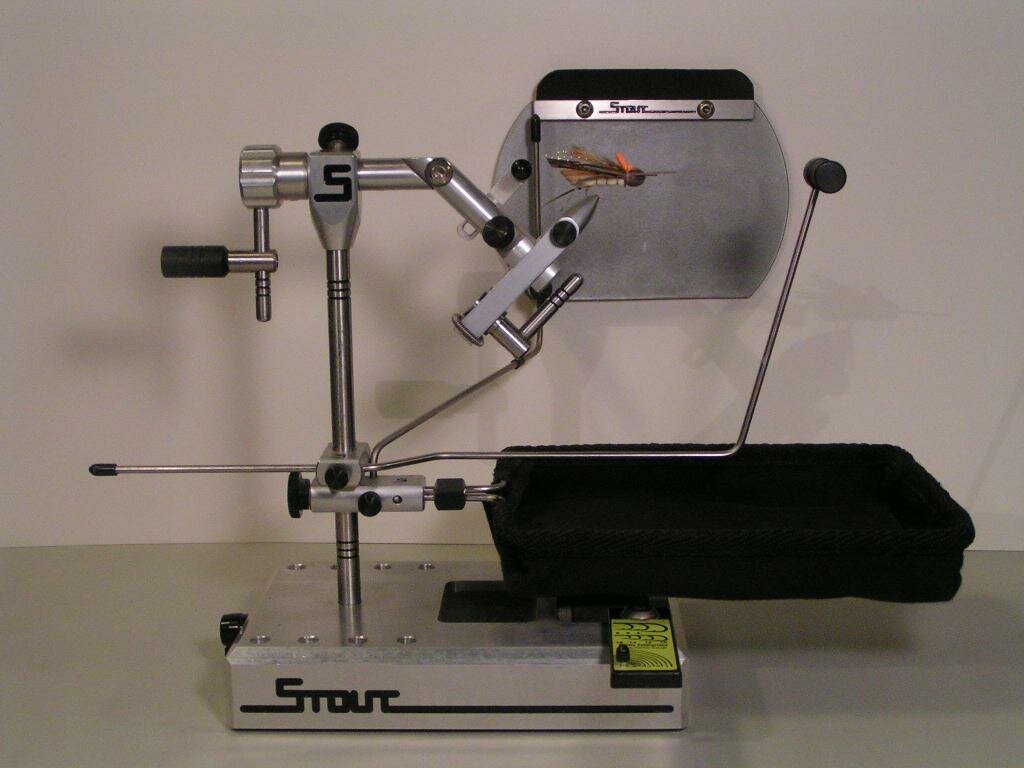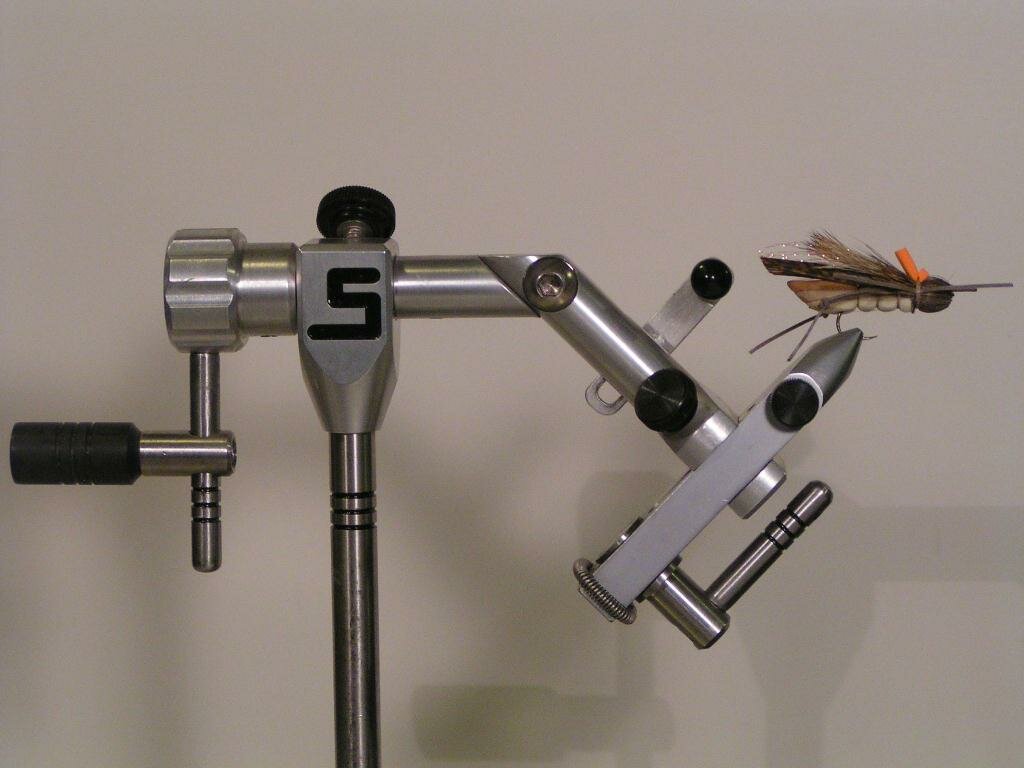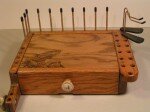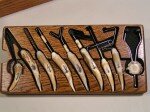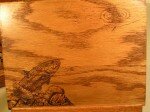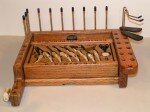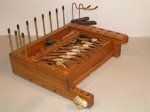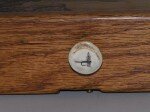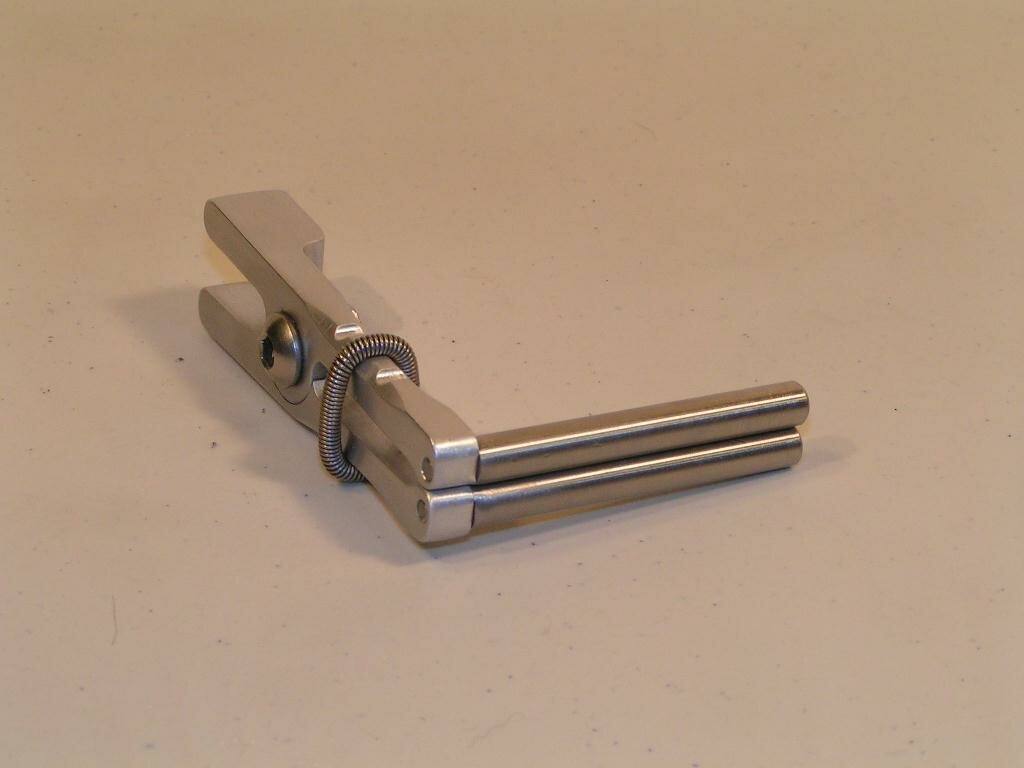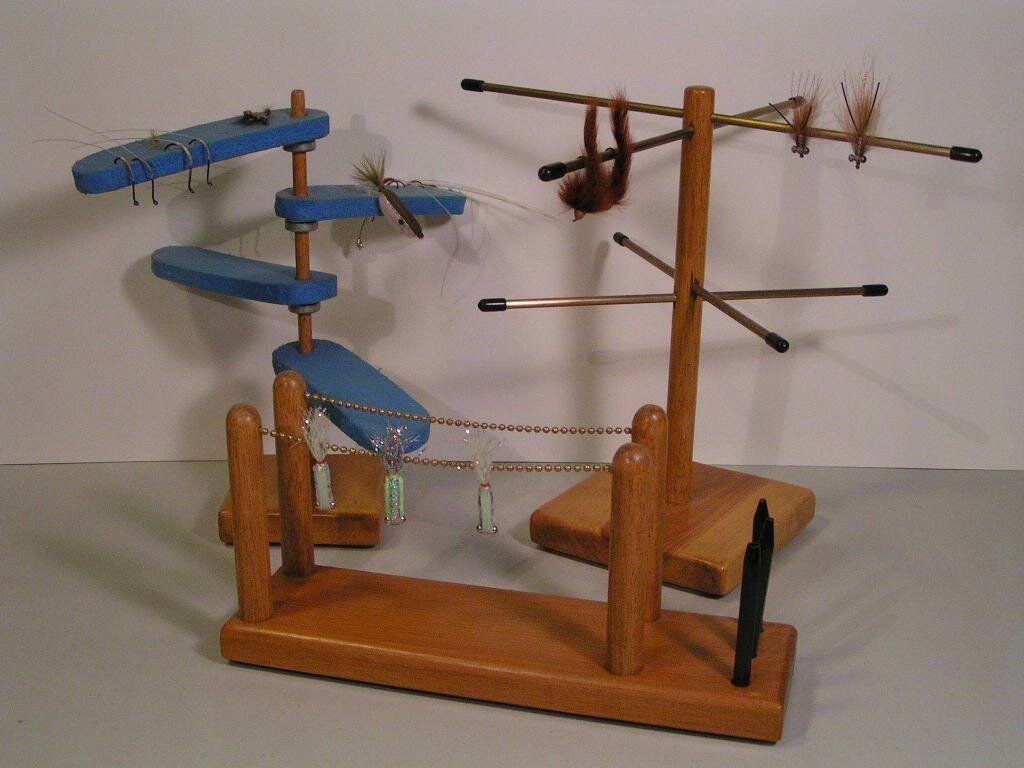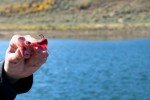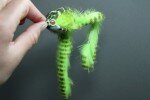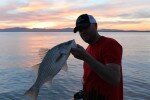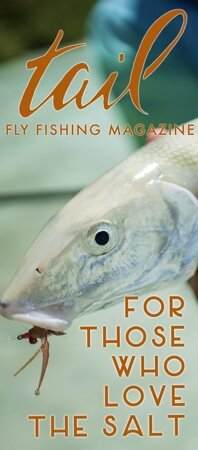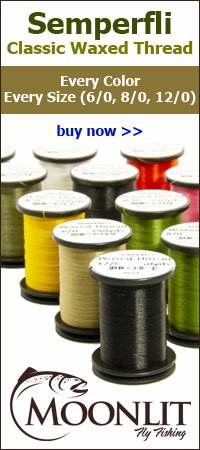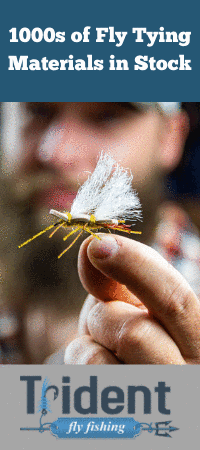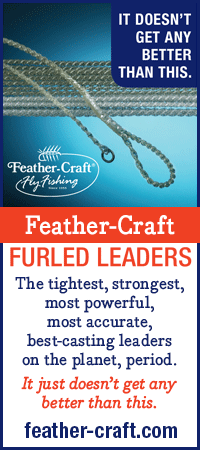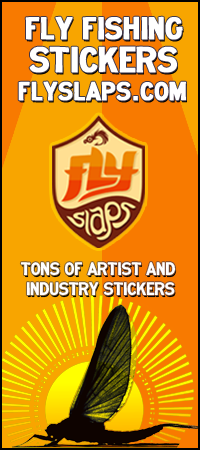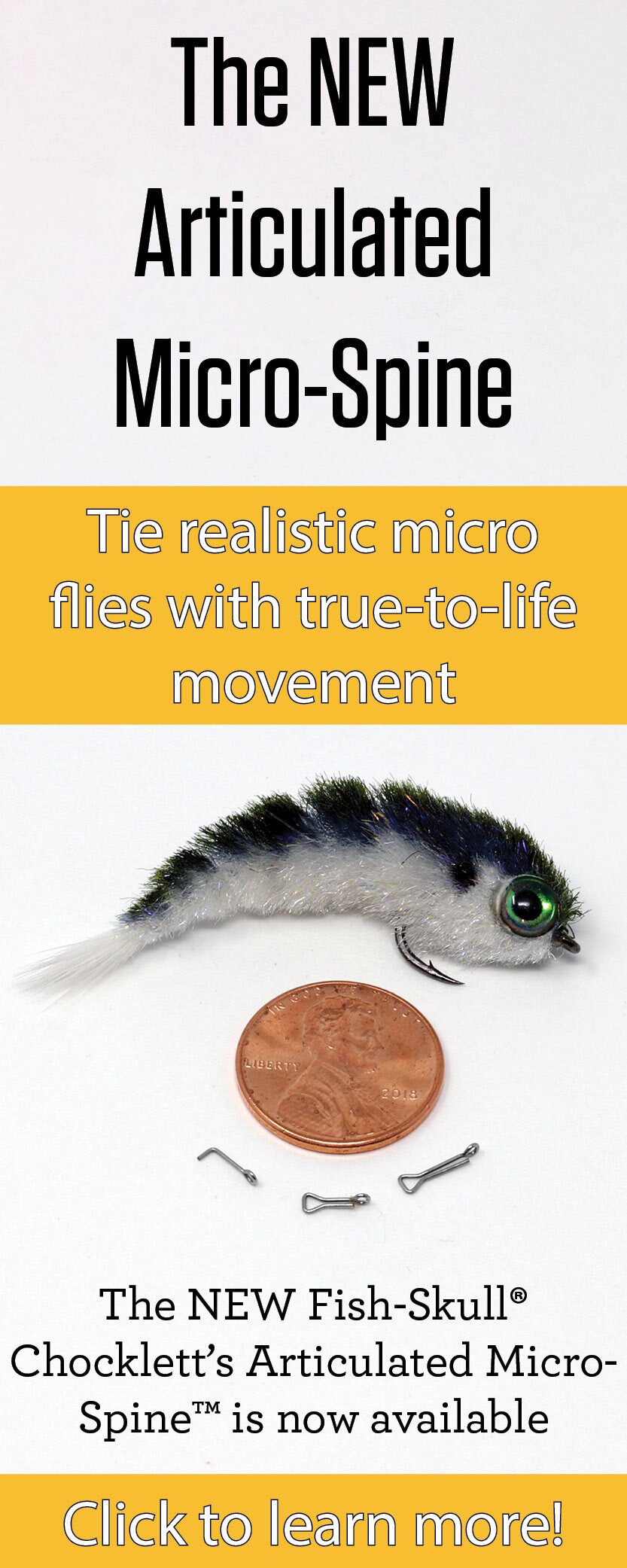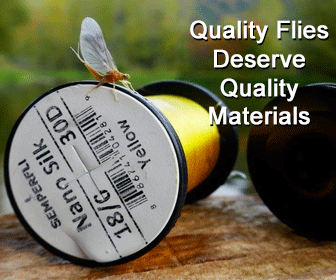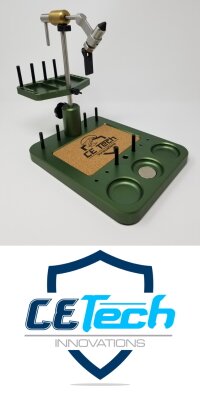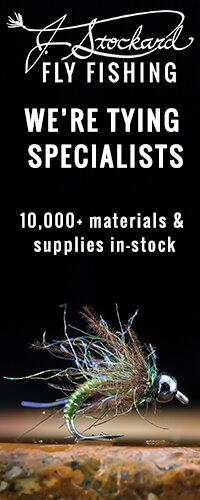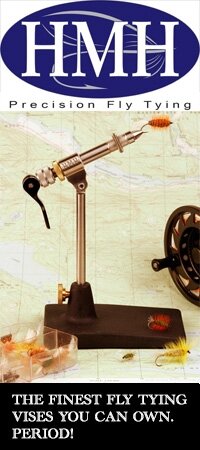 Do you take a vise with you wherever you go?
Do you take a vise with you wherever you go?
Honestly if I can avoid hauling one with me on a trip I will. Usually I tie so much before a trip it’s not usually needed. Plus picking out what materials to take gives me anxiety.
How often do you dream of flies?
Way more than a grown man with a wife and career should.
Is there still a Sasquatch in your fly box at all times?
Without a doubt. Especially a fluorescent white size one and a smaller baby brown trout scheme. I’m pretty sure that with those two I can make it happen more times than not.

Sasquatch
How would you design a FrankenFly pattern?
Usually after a few glasses of whiskey at the vise it gets pretty FrankenFly around my desk. Lots of mishmashing of materials and patterns after a few cocktails…
Do you keep a journal to chronicle your fly tying experiences?
No but pictures help a lot, I take a lot of pictures of flies, especially one offs, I tie TONS of one offs.
If fish could talk, what do you think they would say about fly fishermen?
Before or after they called us sissies? Probably that we take things to serious and over think everything multiple times. They’d also more than likely say ”Are you done taking pictures of me? No I’m not even close to 24”. Can I go back in the water now!?!”

Toadally Amphibious Frog
How do you decide on a name for the flies you design?
Naming flies comes about in multiple ways I don’t really have a set method. Sometimes I have the name before I even have a pattern, like the Shuck Norris. I had the name pop into my head before I knew what fly I’d pair it with, conveniently I was finishing up some R & D on a emerger pattern with a trailing shuck, Bingo. Others like the Chubby Muffin Sculpin, Disco Lemonade and Sasquatch have come well after the pattern was tied and became worthy of a name… Quite often it’s friends that help come up with names while bantering and fishing. Fishing in a boat with two good friends all day is a good start to a good name.
What are the waters and conditions like in Salt Lake City?
It is extremely diverse in waters, conditions and fish. Within 2 hours of my house I can fish for Wipers, Largemouth, Smallmouth, Walleye, Tiger Musky, Pike, various pan fish, several different Cutthroat species, hybrid trout/char like Tiger Trout and Splake and of coarse browns and rainbows for days. Utah doesn’t have a ton of certain fisheries (especially warmwater) like some states but the ones we do have are pretty quality. Like most western states we dam everything possible for water conservation, which means you better educate yourself on reservoirs if you want to take advantage of what the state has to offer. I can also in a few hours be in Idaho, Wyoming, Colorado, Nevada and Montana… I couldn’t think of living anywhere else and I’ve traveled a good amount to various places fishing. Not bad for a dry desert state ehhh?

Hydro Stone
What is the weirdest material you have ever used on a fly?
Hmmmmm weirdest?… I’ve got about 10lbs of Portuguese Water Dog that’s begging to be used. It’s jet black, about 8-10” long and similar to Icelandic sheep but more like our natural hair. I know lots of people tie with their dogs hair but this shits prime! And the groomer thought I was a total whack job asking for his hair back after he got shaved. So probably that or the thick sticking packaging glue rolled into larva.
Do you buy fly boxes or make them yourself? What works best for your streamers?
I’ve made several Bugger Beast style boxes before but considering I have 12 bugger barns, 8 bugger beast Jr’s, 6 bugger beasts and 4 larger homemade jobbers I mostly just buy them these days. I really do like the Cliff products, between the bugger barn and the beasts I’m pretty covered. But there are some new great boxes out there I’d like to try out.
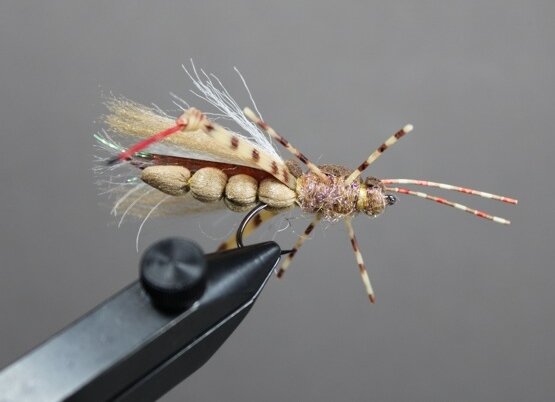
Dennis Hopper
I know you enjoy streamers, but what are some of your favorite dry flies?
I LOVE fishing attractor dries and the bigger the better. I’ve got a great hopper pattern that will probably wear the name Dennis Hopper thats been a staple of mine for several years. From June all the way to the end of October I’ve got some of those on me at all times. One pattern that I’ll fish just about anywhere at anytime even if they don’t have any naturals around is the Chubby Muffin Cicada, it’s just a great all around attractor and it’s unique. It’s always a good idea to show them something fresh.
Any plans to design another dropper to rival the Shuck Norris?
No ”plans” as of now but I’d like to think thats not the only noteworthy dropper I come up with. I do have a softhackle dropper called the “Honey Nooner” that’s just about dialed in…

Shuck Norris
If you had a chance to become a superhero, what powers would you choose?
I’m a huge Spiderman fan so that’s pretty easy, but if I could I’d also take Superman’s x-ray vision.
What’s next for Nick Granato?
Sorry to be lackluster with my response, but more of the same. Fish and tie as much as possible and share the patterns and techniques that I find noteworthy with likeminded people. Joining up with Matt Grajewski on the FlyObsession.com blog has been better than I could hope for and I’m looking forward to seeing where it takes us. I personally find a real problem with the lack of actual fishing and tying substance in the fly fishing industry… Lots of people tweaking and regurgitating the same stuff several other people are, and often all at the same time. Now someone tell me why there needs to be several different blogs all posting the exact SAME content? Fresh and noteworthy substance is going to be my theme for 2013.
 Shawn F. Britton: I am just another angler and fly tier who has let his love of the outdoors consume his life. A published artist and freelance writer, and well know East Coast fly tier. My feet have been wet somewhere in the woods and waters since my birth and I know my rivers and streams like the back of my hand. My business, Flies by Britton, is located in Torrington Connecticut, just minutes from two of New England’s premier Trout fisheries – The Farmington River and The Housatonic River. This is the original home of Custom Fly Tying, home base for my fly tying classes, fly shop, and close to the waters where I grew up fishing – the perfect waters in which to offer my instruction and guided trips for Fly Fishing. I also enjoy fishing and guiding on the smaller streams. You’ll find me just the same on many of the local lakes and ponds. Whether it’s from a canoes, pontoons or float tubes – I’ll be fishing for Trout, Bass, Pike and any other species of fish that will hit the end of my line.
Shawn F. Britton: I am just another angler and fly tier who has let his love of the outdoors consume his life. A published artist and freelance writer, and well know East Coast fly tier. My feet have been wet somewhere in the woods and waters since my birth and I know my rivers and streams like the back of my hand. My business, Flies by Britton, is located in Torrington Connecticut, just minutes from two of New England’s premier Trout fisheries – The Farmington River and The Housatonic River. This is the original home of Custom Fly Tying, home base for my fly tying classes, fly shop, and close to the waters where I grew up fishing – the perfect waters in which to offer my instruction and guided trips for Fly Fishing. I also enjoy fishing and guiding on the smaller streams. You’ll find me just the same on many of the local lakes and ponds. Whether it’s from a canoes, pontoons or float tubes – I’ll be fishing for Trout, Bass, Pike and any other species of fish that will hit the end of my line.

